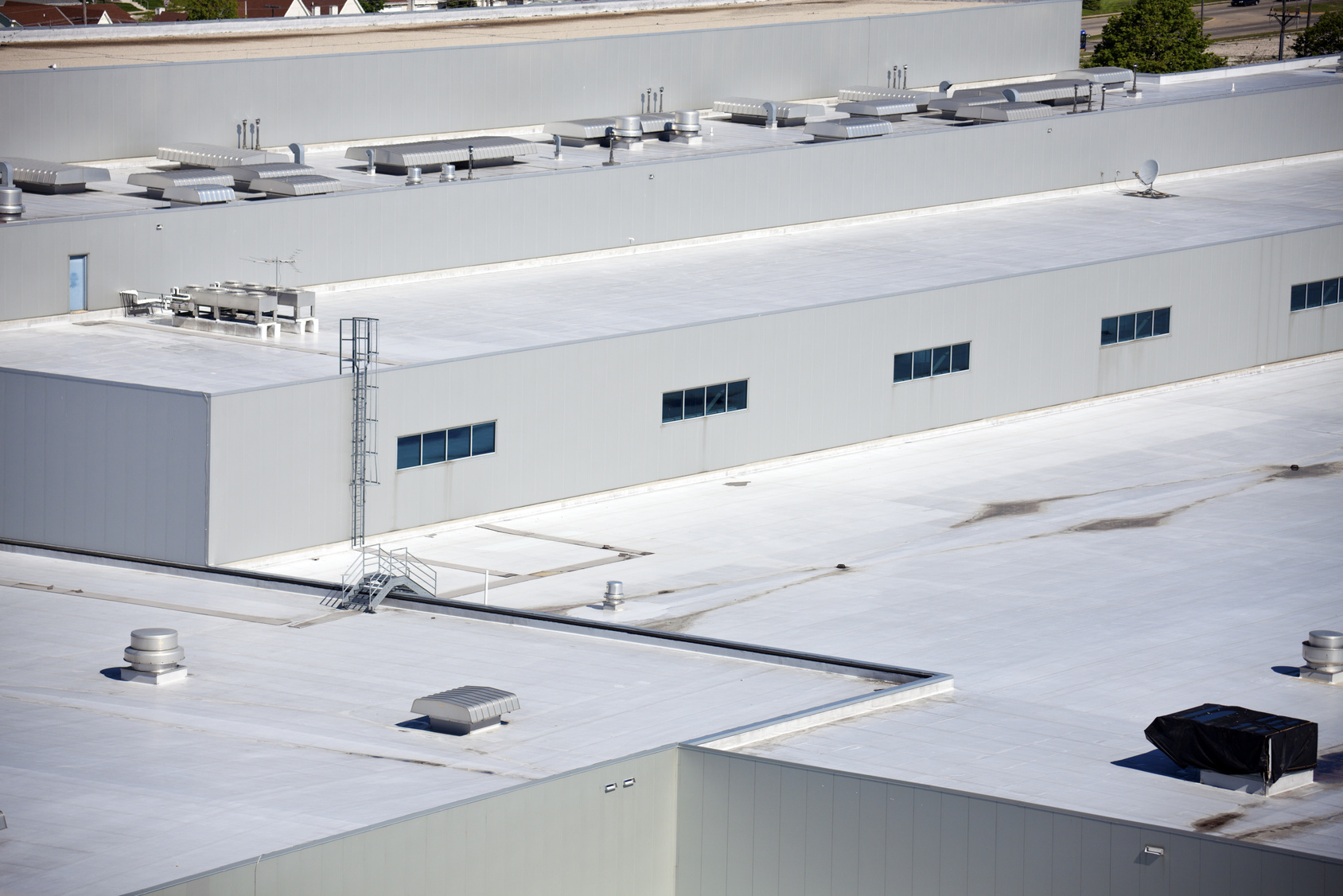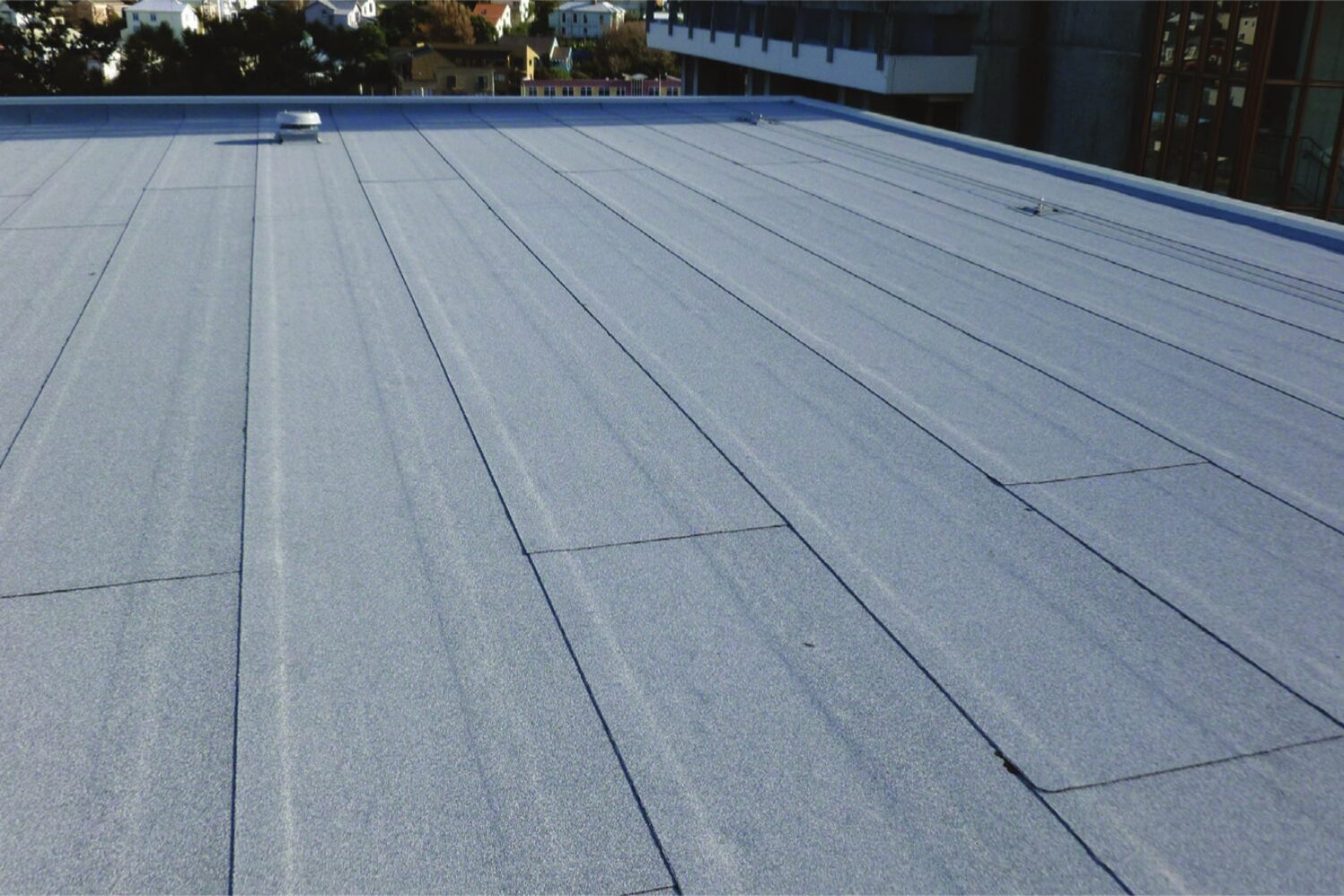Having a reliable roof overhead might be the single most important feature of any structure. Roofs protect what’s inside. An effective roof can even pull double duty by both protecting everything below it and reducing energy costs. But what kinds are out there, and what kinds work best? One type that we’ve used for a very long time is the built up roof. You may be unfamiliar with the term, but you’ve likely seen one if you’ve ever been on top of buildings. That’s because built up roofing systems have been protecting our homes and businesses since before most of us were born. Let’s look at what they are and why they’ve remained relevant for so long.
What is a Built Up Roof?
Built up roofing systems offer a ton of benefits. They protect well and last a long time. It all comes down to how they are constructed. Before we get into the upsides and downsides of this roofing type, let’s look at what built up roofing is.
Also known as tar and gravel or BUR roof systems, built up roofs are created by layering materials. These materials include layers of bitumen sandwiched between ply layers, which cover the optional insulation and base layer. What does that mean? Let’s take a look at the built-up roofing layers, as well as how they work together to protect your property.
First, if needed, a base layer is applied to the roof. This creates a level surface that’s more suitable for building your layers on top of. It can also provide insulation if you use an insulation layer. These layers aren’t completely necessary. It depends on the state of the top layer of the structure, but they’re used in most cases. Once we’ve got a solid base, we apply the bitumen.
Bitumen is a liquid or semi-liquid form of petroleum. It’s commonly called asphalt in the US but includes a range of products. They’re most commonly used in road and roof construction. Some types are produced naturally in pits or lakes. Others are a byproduct of the distillation of certain crude oils. Your layers of bitumen account for much of the protection this type of roof provides.
When we talk about ply, we’re referring to layers of built up roof membrane that are held together by bitumen. These reinforced fabric membranes are usually alternated with bitumen 3 or 4 times. The result is a multi-ply product that holds up under all kinds of inclement weather.
This whole built up roofing system is then finished with a flood layer of bitumen, followed with stones or gravel. A built up roof with gravel not only looks nicer, but is also better protected against hail and footsteps.
Built up roofing is most often used on flat roofs. It can be used with a very slight pitch, but anything too steep and the bitumen runs off. It’s been a popular option in the US for over 100 years, and still provides enough benefits to remain relevant. Today, we have a few different ways of constructing built up roofing systems.
Types of Built Up Roofing
There are different ways we are able to construct BUR roof systems today. Depending upon your specific needs and the time of year, some types of built up roofing work better than others. There are three main processes.
Hot Built-Up
The original method of creating built up roofing, hot built up roofs are created with hot layers of bitumen. This viscous petroleum product is cooked in on-site kettles, and pumped to the roof. It is then sprayed on, layer by layer, creating a watertight seal that will last for decades.
Hot BUR installation works well year-round, but there are some considerations that affect its timeliness. First and foremost, hot BUR installation can produce strong odors. It’s best to perform this type of installation when the building isn’t occupied.
Cold Built-Up
Another type of built up roofing is the cold built up. Instead of hot asphalt, cold BUR installation uses a type of adhesive that is typically sprayed or rolled on. It doesn’t produce the same kinds of fumes hot built-up does, so you can easily install it on occupied buildings. However, the adhesive works best at temps above 40˚, so installation is not easy in the cold winter months.
Ballasted Asphalt Built-Up
Your third built up roofing option is the ballasted asphalt built up. Unlike the other types of built up, the ballasted variety is not directly adhered to the roof. Instead, it is held in place, or ballasted, by heavy stones or beams laid on top. The benefits of going this route are that you aren’t producing the same kind of fumes and repairs are easier.

Roofs of the big warehouse – aerial view
The Benefits of Built Up Roofing
When discussing built-up roof pros and cons, we’ve got to address the protection it provides. It’s the defining aspect of any roof. Built up roofing systems provide superior protection against water and UV rays. They’re also fire resistant, so it will protect occupants in the case of fire. It does all this and needs little maintenance. Let’s look at the reasons built up roof coverings remain so popular.
Superior Moisture Protection
One of the biggest foes a roof encounters is moisture. It can seep into the smallest cracks and cause extensive damage to the building and everything inside. A good roof should reliably keep moisture out in all kinds of inclement weather. Luckily, built up roofs offer superior protection against moisture.
It’s Sustainable
Whether obtained naturally or through the distillation of other materials, bitumen is sustainable. As a natural product, some kinds of bitumen can simply be harvested from the earth. As a byproduct, built up roofing systems allow us to use materials that may otherwise end up in landfills. Very little to no new waste is created in the manufacture of bitumen.
Low Maintenance
If you like to set it and forget it, built up roofing is a great option. These types of roofing systems are built with durable materials that require little maintenance. Most other roofing systems require more.
Longevity
Built up roofing systems can easily last 40 years under ideal conditions. Some are almost a century old and going strong. Although, the average lifespan is more in the 20-30 year range. Either way, a built up roof is sure to last you a long time.
Easy to Repair
If something does go wrong, built up roofing systems are incredibly easy to repair. Damage to this type of roof tends to show in predictable ways. Namely, you may see bubbles, cracks, or ripples in the surface. All you’ve got to do is remove the affected portion and patch it up. No seams or colors to match precisely. The ease of making built up roofing repairs sets this roofing style above the competition.
The Downsides
Like anything, built up roofing systems do come with some downsides. Installation can be tricky. You may even have to move residents out to complete it, due to the fumes. If those things concern you, you’ll want to know a little more about potential downsides.
Replacement Can Get Expensive
When the time does finally come to replace your roof, built up roofs may run more than some other options. Built up roof replacement cost more due to the equipment and personnel required. Some roofing systems can be installed by two guys with a few air tools. Built up roofing requires more highly skilled workers with more specialized equipment.
Hot Bitumen Produces Strong Fumes
The process of heating and applying bitumen means the area is subjected to some strong fumes. They may even be too much for inhabitants to handle. That means you’ll possibly need them out to complete installation. It’s not such an issue with new construction but can catch property owners off guard when remodeling.
The Importance of Maintenance
While BUR roofing systems need little maintenance, they do require some upkeep. If you decide to go with built up roofing, it’s important that you keep it maintained. Make any repairs at the first sight of bubbling, cracking, or rippling. This will prevent small issues from becoming considerably larger ones. It’s much cheaper to keep commercial or residential built up roofs in good shape than it is to replace them.
Expert Installation and Maintenance Make all the Difference
At the end of the day, your built up roof system will only be as good as the company who installs it. It’s crucial that this type of roof is done right, so make sure your installation company has loads of experience. They can help you examine the built up roofing advantages and disadvantages regarding your particular project.
Whenever you’re ready to explore this perennial favorite in roofing systems, we’re here to help.

